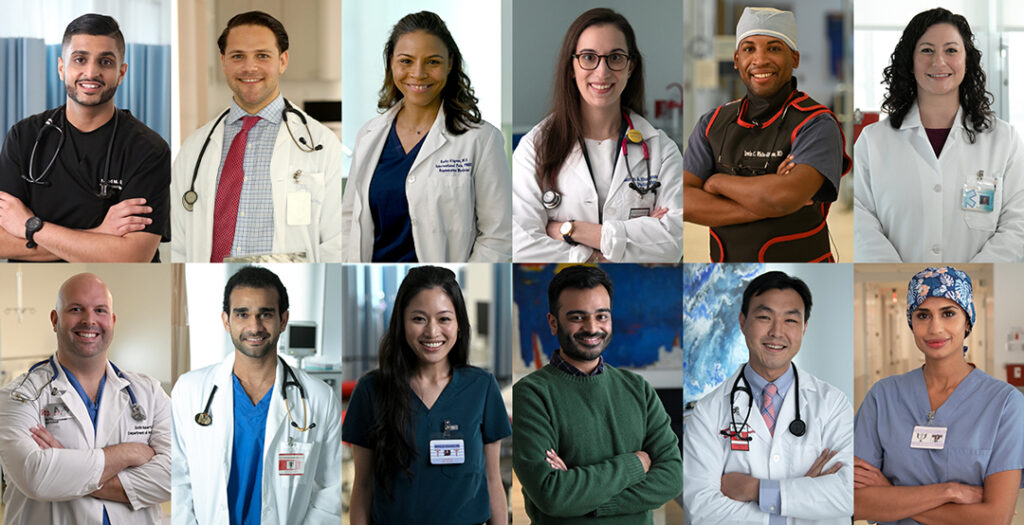Embarking on a medical career? The medical school application process can be daunting. We gathered 8 steps to illuminate the path, helping pre-med students understand the entire process of getting into a Doctor of Medicine (MD) program.
8 Steps in the medical school application process
1. MCAT Timing
No matter where you are in your journey from medical school application to enrollment, taking the Medical College Admission Test (MCAT) is one of the first application milestones to complete.
It is best to take the MCAT exam in the spring the year before you plan to start medical school. Since it can take over a month to get your MCAT results back, it is good to start early. You will want to leave enough time if you want, or need, to retake the exam.
Most US med students apply to at least some schools using the American Medical College Application Service (AMCAS), which allows you to submit your applications before you have your final MCAT scores. This is also true for Canadian students submitting through the Ontario Medical School Application Service (OMSAS).
Schools located outside of the US and Canada that may not participate in these application systems typically have a similar policy.

2. Selecting medical schools for applications
Students should spend time comparing med schools before they begin filling out an OMSAS, AMCAS, or institution-specific medical school application. A typical recommendation would be applying to between 15 and 20 schools. This group should include international medical schools. That approach can increase your chances of gaining interviews and acceptances.
During this review, it is also a good time to start figuring out how to tailor your application to each program.
“See what type of student the medical school wants, and make sure it’s a good fit,” advises Duncan Kirkby, dean of admissions at St. George’s University (SGU).
Many applicants find it helpful to review Medical School Admission Requirements from university websites. You can also subscribe to them from the Association of American Medical Colleges (AAMC). This resource allows you to easily compare what’s required from different schools, but individual programs also spell out expectations on their websites.
3. Letters of recommendation
While letters of recommendation don’t have to be completed before you submit an application through AMCAS or OMSAS, it’s a good idea to contact potential contacts during the spring to ensure you end up with strong recommendations.
“A good letter speaks to your academic ability, teamwork skills, and if it’s from a nonacademic, your passion for the volunteer work you’ve done,” Kirkby recommends. He also suggests checking to see if your college has a pre-med committee that writes recommendations.
Try to ask for all medical school recommendations in person, and make sure to give your letter writers any materials that will assist them. Note that some schools, including programs in Texas and the Caribbean, often require letters to be emailed or uploaded to an online system.
4. Completing applications and writing essays
You may end up applying to schools with AMCAS, OSMAS, state, or institution-specific applications. Each of these options will be slightly different, so be sure to carefully read over everything involved before you start.
Each institution will have slightly different deadlines, information requirements and submission format requirements, as mentioned for the letters of recommendation.
Regardless of the applications you will be working on, you should set aside a fair amount of time for writing and reviewing essays. These essays should leverage the research on the school you did when deciding your application targets.
The most notable one is your personal statement. This essay should highlight how your experiences led you to pursue a career in medicine. It should also address how you feel the medical school will help you fulfill those experiences.
5. Preparing for secondary applications
Medical school secondary applications are institution-specific essays designed to get a better sense of who you are and determine if you would be a good fit for the program. Not every school sends out supplemental applications, but make sure to set aside time for these essays. According to Ganss, “Secondaries become a part-time job for most students.”
There are typically word or character limits for secondary applications, so make sure you stay focused and address the questions instead of dancing around them. Looking over past essay prompts is a good way to prepare.

6. Attend medical school interviews
Medical school interviews typically begin in September and can continue until spring. The AAMC recommends preparing by doing plenty of research on the school and practicing talking through common medical school interview questions with a friend or mentor. You also might consider attending some type of workshop or mock interview to find out what you can do to improve. Interview season is also a good time to learn more about a school’s facilities, talk to current students, and ask the admissions team any lingering questions.
7. Complete any remaining course requirements
Applicants who are still completing their undergraduate degree will have the opportunity to complete any unfulfilled medical school course requirements during their senior year.
If you are applying after you’ve finished college, make sure you complete any additional coursework that’s required, perhaps through a postbaccalaureate program.

8. Hold your spot
Programs start sending letters as early as October, but some applicants don’t hear until much later. While it’s exciting to receive an acceptance letter, don’t feel pressured to immediately accept.
You typically need to respond to an offer of acceptance within a few weeks and pay a fee to reserve a spot while you make your final decision. The AAMC suggests making your final decision and withdrawing offers from schools you don’t plan to attend by the end of April. Just be sure to verify timelines with individual schools.
Start planning your path to medical school
While there are many steps process for medical school applications, understanding the timing and deadlines will help you stay on track.
It’s also never too early to start thinking about portions of the medical school application process that are further down the road, such as interviews. Make sure you’re prepared for these conversations by reading our article “How to Prepare for Medical School Interviews: Steps for Success.”

